Biking in Paris: 14 Tips For the Best Experience
Cycling in Paris used to sound like a dare. But that’s changed. New lanes have reshaped the city, and more locals than ever are hopping on two wheels.
For visitors, biking can be one of the easiest ways to explore. But it’s not without surprises. Here’s what travelers should know before hopping on a saddle.
1. Bike rentals are everywhere
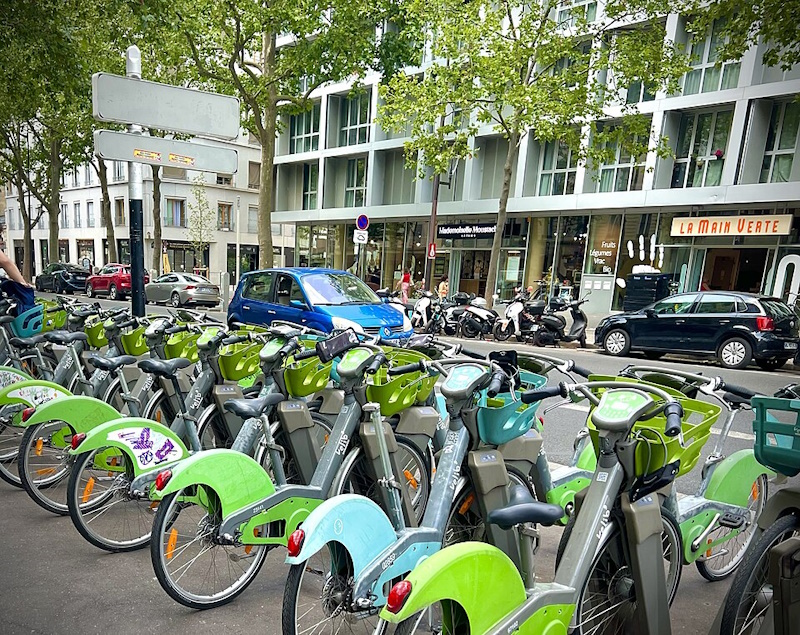
You don’t need to plan far in advance. Apps like Lime and Dott let you rent electric bikes straight from your phone. Many riders say Lime bikes are smoother and more reliable.
Vélib’, the city-run system, is cheaper but can be frustrating if you’re unfamiliar with the docking process. Stations may be full when you try to return a bike or completely empty when you need one.
2. Tours are a smart way to start
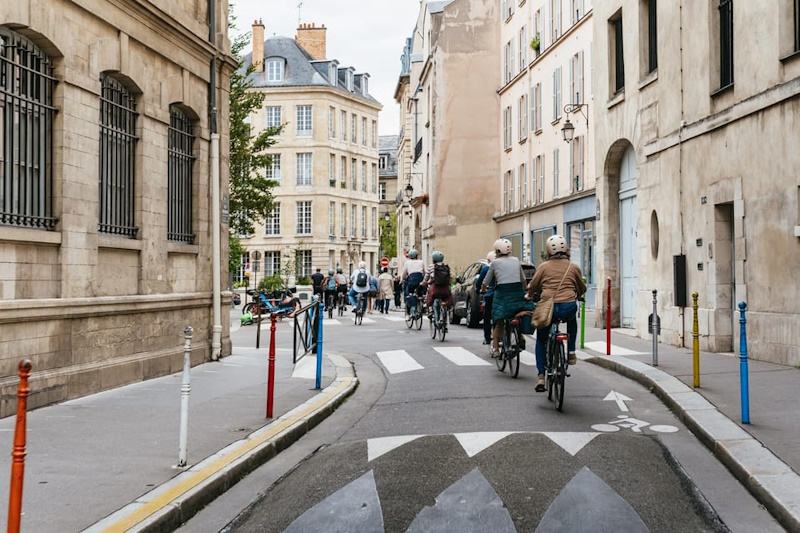
If you’re new to city biking or unsure about navigating, guided bike tours are a great option. It’s a relaxed way to build confidence and see major sights without having to think too much about routes or traffic.
This tour is often highly recommended for its small group tours of central Paris.
3. Plan your route before you go
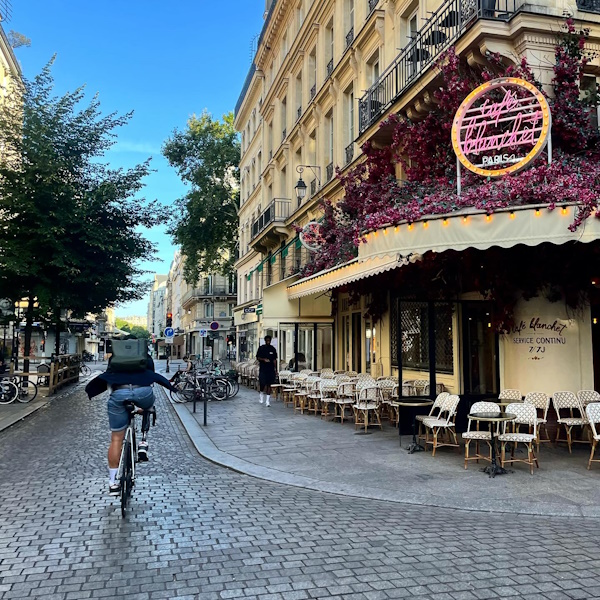
Many first-time cyclists in Paris say the hardest part is following directions. Holding your phone while riding is unsafe and illegal.
Apps like CityMapper, Komoot, or even Google Maps help, but it’s best to study your route before you start. Sticking to main boulevards or river paths simplifies everything.
4. Stick to the river for your first ride
The lower banks of the Seine, especially on the Right Bank, offer some of the best beginner routes. These former car roads are now wide shared spaces for pedestrians and cyclists.
There’s room to go slow and enjoy the views, and you’ll pass some of Paris’s most iconic landmarks along the way.
5. Don’t expect everyone to follow the rules
Parisian cyclists often treat red lights as optional. Earbuds, phones, and risky overtakes are common. But don’t follow that lead.
Following the rules including riding on the right, yielding to pedestrians, and stopping at lights, makes you a lot safer and far less likely to cause problems.
6. You’ll need to share the road
Even with new bike lanes, not every street has one. On smaller roads, you’ll be riding with cars. This is usually manageable – most drivers in central Paris expect cyclists – but it does require awareness and a calm head.
At complex intersections, don’t hesitate to walk your bike if it feels chaotic.
7. Avoid riding during rush hour
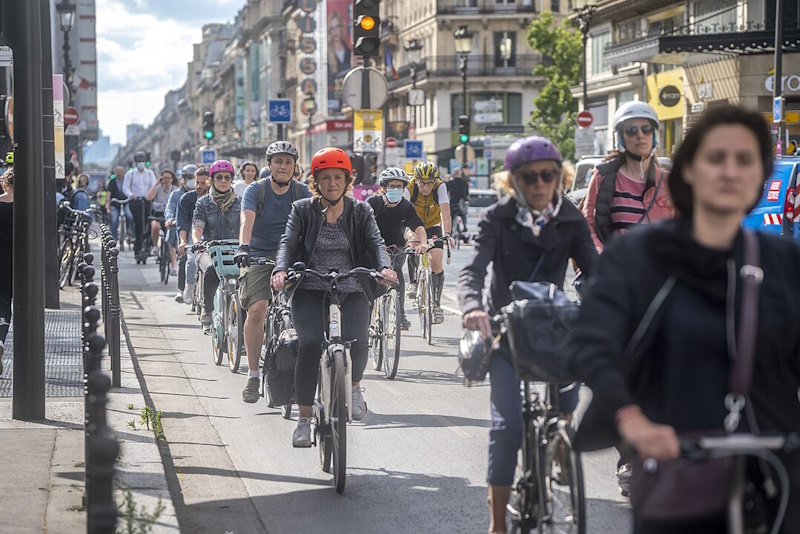
Mornings between 8 and 9am and evenings around 5 to 6pm are the busiest. Bike lanes fill up with commuters, couriers, and fast-moving ebikes.
If you’re sightseeing or just cruising, ride between those windows. It’s calmer, safer, and less stressful.
8. Yes, tourists ride too
Plenty of tourists use the bike lanes. You’ll be passed often – sometimes closely – but that’s normal. Locals expect slower riders, especially near the river or popular attractions.
Keep to the right, be predictable, and you’ll be fine. Don’t stress about slowing people down.
9. Avoid the Arc de Triomphe
Even confident riders say the Place de l’Étoile is intense. There’s technically a bike lane around it, but the traffic patterns are confusing and aggressive.
If you want to visit, park your bike nearby and walk. The Champs-Élysées also has a bike lane, but it’s often crowded with cars and buses.
10. Some lanes are better than others
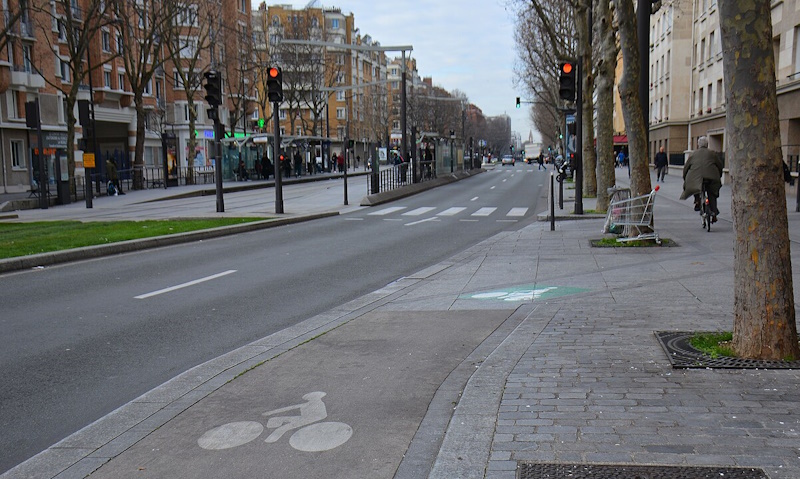
Streets like Boulevard Magenta or Rue de Rivoli have dedicated lanes, but riders disagree about how safe or comfortable they feel.
On Rivoli, for example, the left bank lane is often smoother than the right. Other spots like Boulevard Sébastopol are busy and narrow, with pedestrians sometimes crossing without looking.
11. Use caution near bus lanes
Some bike lanes are shared with buses, which can be intimidating. Bus drivers in Paris are generally used to cyclists and often use soft bells to signal before passing. But not always. Be especially alert and never assume they see you.
12. Bring the right gear
Helmets aren’t required in Paris, but they’re a good idea. At night, good lights are essential – some rental bikes come with them, some don’t.
A bell helps warn pedestrians, especially on shared paths. And always use a proper lock if you leave your bike unattended.
13. Ride outside the center for a calmer experience
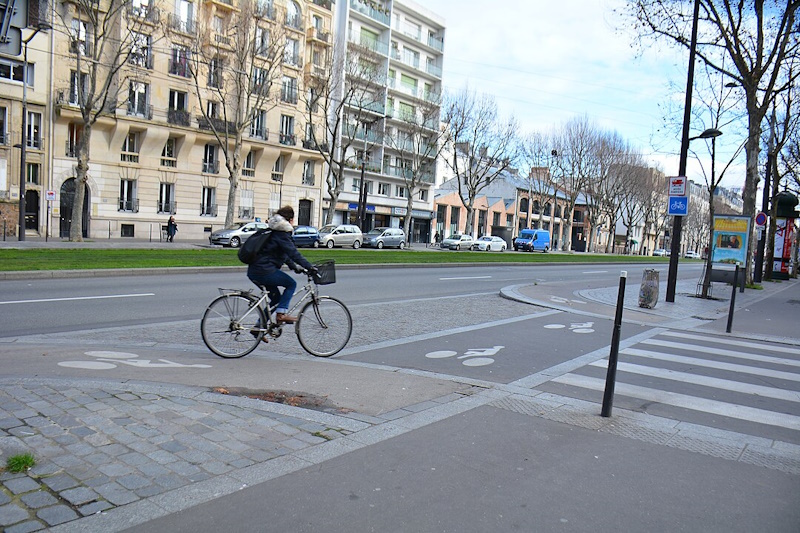
If the city center feels too intense, consider biking just outside Paris. You can take your bike on the RER during off-peak hours and ride along the Seine in the suburbs.
Sartrouville is a popular starting point, and the paths are quiet and scenic.
14. Know when to walk it
Some intersections are just badly designed. Others might have construction or unexpected obstacles. If you’re ever unsure, get off and walk.
Paris is compact and bike-friendly, but it’s still a major city. Walking your bike for a block is better than getting into a dangerous situation.
Final thought
If you’re already used to city cycling, Paris will feel surprisingly rideable. If you’re new to it or nervous, start slow and give yourself time. Once you find your rhythm, you may discover it’s one of the best ways to experience the city.

